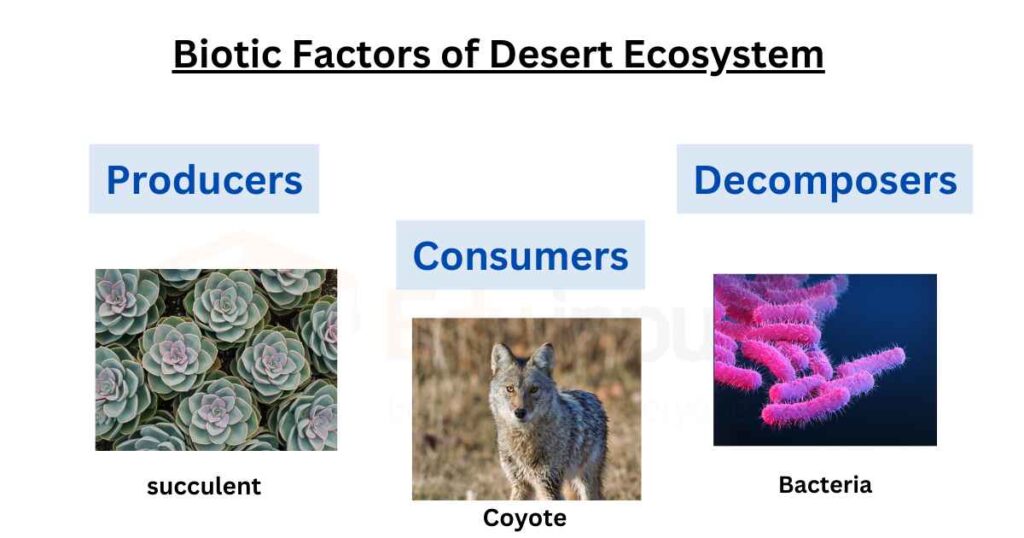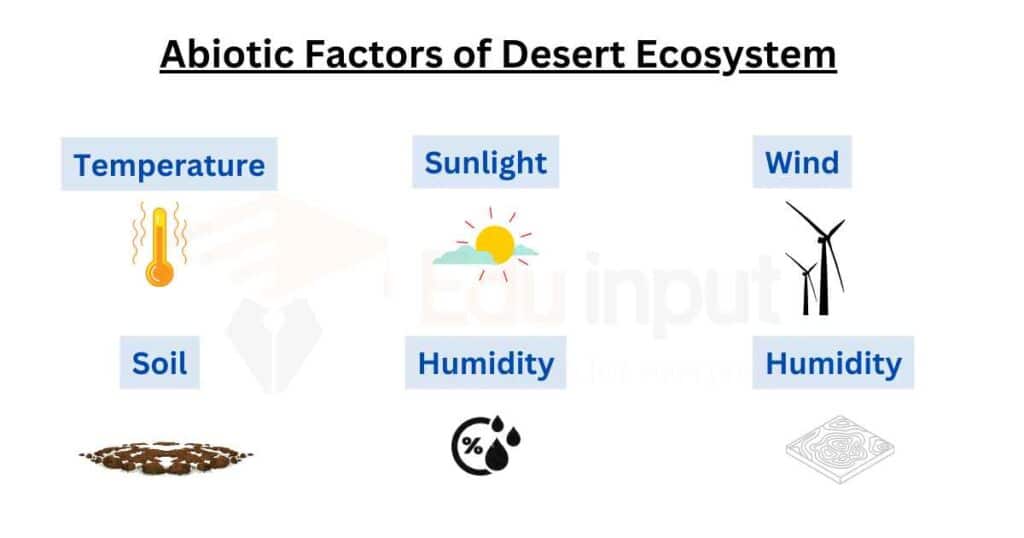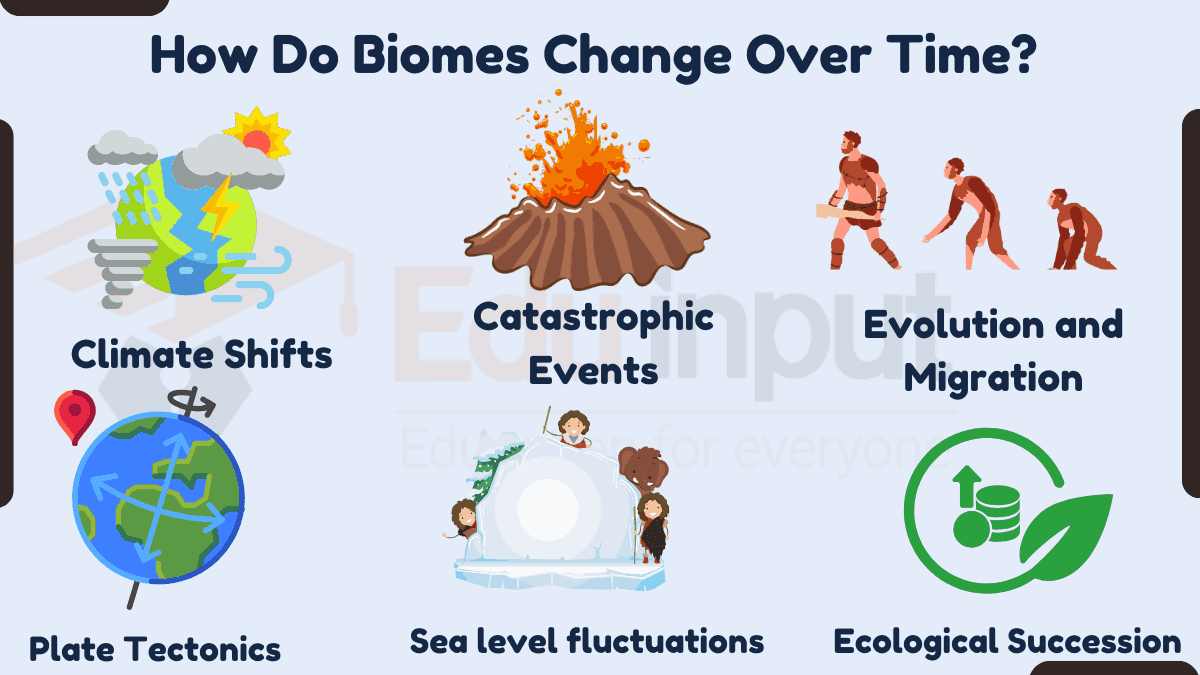Biotic And Abiotic Factors Of Desert Ecosystem
The desert ecosystem is composed of biotic factors such as producers, consumers, and decomposers, while the abiotic factors include high temperature, low rainfall, and sunlight.
Biotic Factors of Desert Ecosystem
Desert ecosystem consists of following biotic factors:

Producers
Plants such as cacti, succulents, and desert shrubs are the primary producers in the desert ecosystem, able to survive with minimal water and high temperatures.
Consumers
Desert animals such as kangaroo rats, snakes, and coyotes, are examples of consumers that feed on the producers or other consumers for energy.
Decomposers
Fungi and bacteria play an important role in the desert ecosystem by breaking down dead plants and animals. It returns nutrients to the soil for the producers to use.
Abiotic Factors of Desert Ecosystem
Desert ecosystem consists following abiotic factors:

Temperature
The desert ecosystem is characterized by high temperatures during the day and low temperatures at night due to the lack of vegetation to regulate temperature.
Precipitation
The desert ecosystem has low precipitation levels, which can lead to water scarcity for both plants and animals.
Sunlight
The desert ecosystem receives high levels of sunlight, which can be beneficial for photosynthesis but can also cause extreme heat stress.
Wind
The desert ecosystem is often characterized by strong and consistent winds that can erode and shape the landscape over time.
Soil
The desert ecosystem has soil with low fertility due to the lack of organic matter and the high levels of salinity and alkalinity.
Rocks
The desert ecosystem is characterized by different types of rocks, such as sandstone and granite, that influence the landscape and provide habitats for plants and animals.
Sand
The desert ecosystem has extensive sand dunes that can provide unique habitats for specialized species of plants and animals.
Water availability
The desert ecosystem has limited water resources, which can be found in oases, springs, and other specialized habitats.
Humidity
The desert ecosystem is characterized by low humidity levels, which can cause water loss in plants and animals and increase heat stress.
Topography
The desert ecosystem has varied topography, such as mountains, plateaus, and canyons, which provide unique habitats for different species of plants and animals.
Rainstorm
In the southwestern desert ecosystem, a rainstorm is an abiotic factor.

 written by
written by 




Leave a Reply